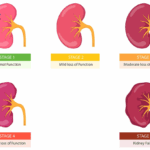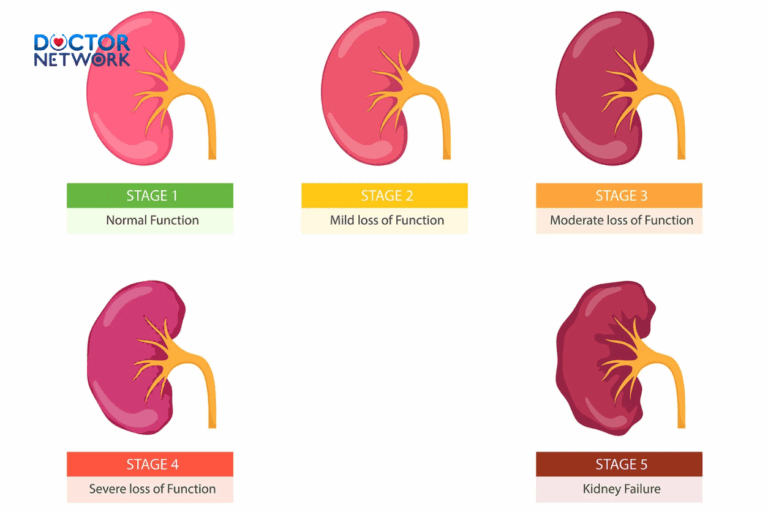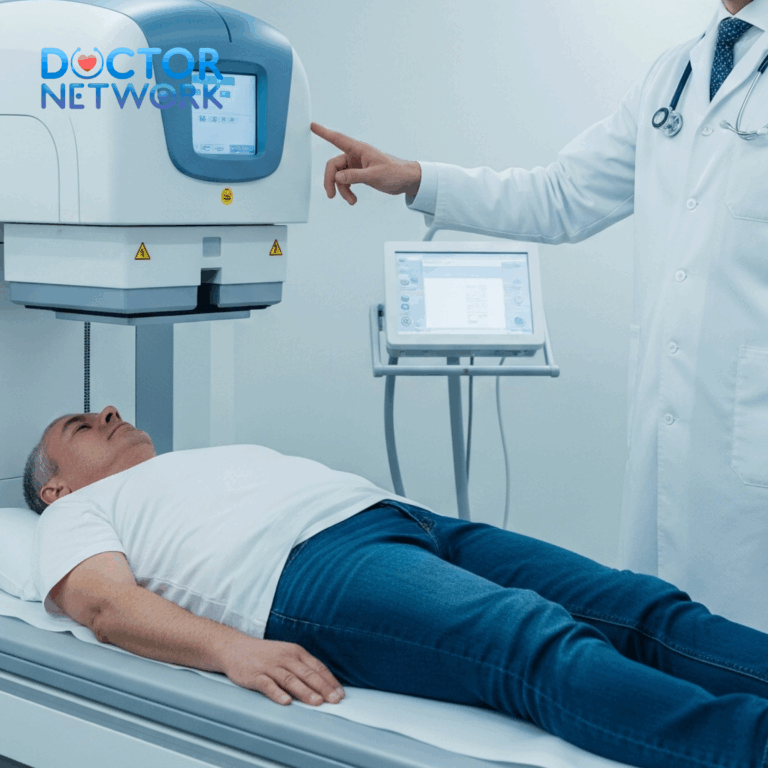Post-meal drowsiness, commonly termed “food coma,” affects millions worldwide, but persistent sleepiness after eating could signal underlying metabolic dysfunction, particularly diabetes mellitus. This chronic endocrine disorder affects over 537 million adults globally, with many cases remaining undiagnosed until complications develop. Understanding the connection between postprandial fatigue and glucose metabolism disorders is crucial for early detection and prevention of serious health consequences.
Is Feeling Sleepy After Eating a Sign of Diabetes? – This comprehensive analysis explores the intricate relationship between post-meal sleepiness and diabetes, examining normal physiological responses versus pathological indicators. We’ll investigate the underlying mechanisms of reactive hypoglycemia, insulin resistance patterns, and sleep disturbances associated with diabetic conditions. Additionally, this guide covers differential diagnosis considerations, comprehensive symptom recognition, management strategies, and evidence-based treatment approaches to help readers distinguish between benign food-induced lethargy and potential warning signs requiring medical intervention.
Understanding Diabetes: The Basics of Blood Sugar and Energy
Diabetes mellitus represents a complex metabolic disorder characterized by chronic hyperglycemia resulting from defective insulin secretion, insulin action, or both mechanisms simultaneously. Insulin, a peptide hormone produced by pancreatic beta cells, serves as the primary regulator of glucose homeostasis, facilitating cellular glucose uptake for energy production and storage.
The pathophysiology involves multiple interconnected processes affecting glucose metabolism. In Type 1 diabetes, autoimmune destruction of insulin-producing cells leads to absolute insulin deficiency. Type 2 diabetes develops through progressive insulin resistance combined with relative insulin deficiency. Gestational diabetes occurs during pregnancy due to hormonal changes affecting insulin sensitivity. Pre-diabetes represents an intermediate metabolic state with glucose levels above normal but below diabetic thresholds.
Insulin resistance, a hallmark of Type 2 diabetes, occurs when cells become less responsive to insulin signaling. This dysfunction forces the pancreas to produce increasing amounts of insulin to maintain glucose homeostasis. Eventually, pancreatic beta cells become exhausted, leading to progressive insulin deficiency and overt diabetes development.
Sleepiness After Eating: A Potential Diabetes Connection

The “Food Coma” Phenomenon: Normal vs. Concerning
Postprandial somnolence typically occurs as a normal physiological response to eating, particularly following large meals rich in carbohydrates and simple sugars. The body naturally redirects blood flow and energy resources toward digestive processes, temporarily reducing alertness levels. This phenomenon involves complex neurohormonal interactions including serotonin release, parasympathetic nervous system activation, and circadian rhythm influences.
However, excessive or persistent drowsiness following meals may indicate underlying glucose metabolism abnormalities. Concerning symptoms include severe fatigue lasting several hours, cognitive impairment affecting daily activities, or sleepiness occurring consistently after normal-sized meals. These manifestations warrant medical evaluation to rule out diabetic conditions or other metabolic disorders.
Mechanism in Diabetes
Reactive Hypoglycemia and Insulin Over-secretion
Reactive hypoglycemia represents a critical mechanism linking post-meal sleepiness to diabetes development. Following carbohydrate consumption, individuals with impaired glucose tolerance or early-stage diabetes may experience excessive insulin secretion. This insulin overshooting causes rapid glucose uptake by cells, resulting in a precipitous blood sugar decline within 2-4 hours post-meal.
The hypoglycemic state triggers multiple physiological responses including:
- Autonomic nervous system activation
- Counter-regulatory hormone release (glucagon, epinephrine, cortisol)
- Neurological symptoms due to glucose-deprived brain cells
- Compensatory mechanisms attempting to restore glucose homeostasis
These responses manifest as drowsiness, weakness, confusion, tremors, palpitations, diaphoresis, and intense hunger. Repeated episodes of reactive hypoglycemia often indicate developing insulin resistance and represent an early warning sign of Type 2 diabetes progression.
Hyperglycemia’s Role
Chronic hyperglycemia contributes to fatigue through multiple pathways. Elevated glucose levels cause osmotic diuresis, leading to dehydration and electrolyte imbalances. High blood sugar also impairs cellular energy production efficiency, creating a paradoxical situation where abundant glucose remains unavailable for cellular utilization due to insulin dysfunction.
Differential Diagnosis Considerations
Post-meal sleepiness can result from various non-diabetic factors requiring careful consideration:
Physiological Factors:
- Large meal consumption overwhelming digestive capacity
- High glycemic index foods causing rapid glucose fluctuations
- Circadian rhythm influences affecting alertness patterns
- Natural postprandial hormonal changes
Medical Conditions:
- Hypothyroidism affecting metabolic rate and energy levels
- Anemia reducing oxygen-carrying capacity
- Sleep disorders causing chronic fatigue
- Gastrointestinal disorders affecting nutrient absorption
- Medication side effects influencing energy levels
This differential complexity underscores the importance of comprehensive medical evaluation when persistent post-meal fatigue occurs.
Broader Relationship Between Diabetes and Sleep Disturbances
Impact of Diabetes on Sleep Quality
Diabetes significantly disrupts sleep architecture and quality through multiple mechanisms. Diabetic individuals frequently experience fragmented sleep, difficulty initiating sleep, frequent nocturnal awakenings, and non-restorative sleep patterns. These disturbances stem from physiological complications and metabolic imbalances associated with glucose dysregulation.
Specific Sleep Disorders Linked to Diabetes
Sleep Apnea (Obstructive Sleep Apnea Syndrome) Sleep apnea affects approximately 58% of Type 2 diabetic patients, representing a bidirectional relationship where each condition exacerbates the other. Repeated breathing cessations during sleep cause intermittent hypoxemia, leading to oxidative stress, inflammation, and sympathetic nervous system activation. These pathophysiological changes worsen insulin resistance and glucose control.
Restless Legs Syndrome (Willis-Ekbom Disease) This neurological disorder affects 25% of diabetic patients compared to 5-10% in the general population. Characterized by uncomfortable leg sensations and irresistible movement urges, particularly during evening hours, this condition severely disrupts sleep initiation and maintenance. The underlying mechanism involves dopaminergic dysfunction and peripheral neuropathy complications.
Other Diabetes-Related Sleep Disruptions
Diabetic Neuropathy Peripheral neuropathy affects up to 50% of diabetic patients, causing burning pain, tingling sensations, and numbness in extremities. These symptoms typically worsen during nighttime hours, significantly disrupting sleep quality and duration. The neuropathic pain results from chronic hyperglycemia-induced nerve damage and inflammation.
Fluctuating Blood Sugar Levels Nocturnal glucose fluctuations create multiple sleep disturbances. Hyperglycemia causes excessive urination (nocturia), thirst, and physical discomfort. Hypoglycemic episodes trigger counter-regulatory responses including sweating, tremors, anxiety, and hunger, often awakening patients from sleep.
| Sleep Disorder | Prevalence in Diabetics | Impact on Glucose Control | Treatment Considerations |
|---|---|---|---|
| Sleep Apnea | 58% | Worsens insulin resistance | CPAP therapy, weight loss |
| Restless Legs Syndrome | 25% | Indirect through sleep loss | Dopamine agonists, iron therapy |
| Neuropathic Pain | 50% | Sleep disruption affects control | Pain management, glucose optimization |
| Nocturia | 85% | Frequent awakening patterns | Glucose control, bladder training |
How Sleep Affects Diabetes Risk and Management
Sleep Deprivation and Diabetes Risk
Chronic sleep deprivation significantly increases Type 2 diabetes risk through multiple physiological pathways. Sleep restriction disrupts circadian rhythm regulation, leading to altered glucose metabolism, increased cortisol production, and enhanced insulin resistance. Studies demonstrate that individuals sleeping less than 6 hours nightly have a 50% higher diabetes risk compared to those achieving 7-8 hours of sleep.
Sleep loss affects key metabolic hormones including:
- Cortisol elevation: Promotes gluconeogenesis and insulin resistance
- Growth hormone disruption: Impairs glucose utilization and cellular repair
- Leptin reduction: Decreases satiety signaling
- Ghrelin increase: Enhances appetite and food intake
Hormonal Impact and Metabolic Consequences
Sleep disturbances create a cascade of hormonal imbalances affecting glucose homeostasis. Reduced growth hormone secretion during deep sleep phases impairs protein synthesis, cellular repair mechanisms, and metabolic efficiency. This hormonal disruption contributes to visceral adiposity accumulation, particularly abdominal fat deposition, which directly correlates with insulin resistance development.
Additionally, sleep deprivation affects sympathetic nervous system activity, increasing inflammatory markers and oxidative stress. These changes promote endothelial dysfunction, contributing to cardiovascular complications commonly associated with diabetes.
Other Key Signs and Symptoms of Diabetes

Early Warning Signs Common to All Diabetes Types
Diabetes presents with characteristic symptoms resulting from hyperglycemia and its metabolic consequences. Recognizing these early indicators enables prompt medical intervention and prevents severe complications.
Primary Symptoms:
- Polyuria (Excessive Urination): Glucose-induced osmotic diuresis
- Polydipsia (Increased Thirst): Compensatory response to fluid loss
- Polyphagia (Excessive Hunger): Cellular glucose starvation despite hyperglycemia
- Unexplained Fatigue: Impaired cellular energy production
- Blurred Vision: Glucose-related lens swelling and osmotic changes
Type-Specific Symptom Patterns
Type 2 Diabetes Manifestations
Type 2 diabetes often develops insidiously with subtle symptom progression:
- Recurrent Infections: Particularly fungal infections due to immunosuppression
- Slow Wound Healing: Impaired cellular repair mechanisms
- Peripheral Neuropathy: Numbness and tingling in extremities
- Acanthosis Nigricans: Dark, velvety skin patches indicating insulin resistance
- Erectile Dysfunction: Vascular and neurological complications in men
Type 1 Diabetes Presentations
Type 1 diabetes typically presents acutely with severe symptoms:
- Rapid Weight Loss: Protein and fat catabolism due to insulin deficiency
- Diabetic Ketoacidosis: Life-threatening metabolic emergency
- Nausea and Vomiting: Ketone accumulation effects
- Fruity Breath Odor: Acetone elimination through respiration
- Severe Dehydration: Combined effects of osmotic diuresis and poor intake
Gestational Diabetes Indicators
Gestational diabetes often remains asymptomatic but may include:
- Mild polyuria and polydipsia
- Increased susceptibility to urinary tract infections
- Excessive fetal growth (macrosomia)
- Pregnancy-related complications
| Diabetes Type | Onset Pattern | Key Distinguishing Features | Age of Typical Presentation |
|---|---|---|---|
| Type 1 | Acute (days to weeks) | Rapid weight loss, ketoacidosis risk | Children, young adults |
| Type 2 | Gradual (months to years) | Obesity, family history, slow progression | Adults >40 years |
| Gestational | Pregnancy-related | Develops during pregnancy | Pregnant women 24-28 weeks |
When to See a Doctor
Early Intervention Indicators
Recognizing when to seek medical evaluation is crucial for preventing diabetes complications and ensuring optimal health outcomes. Several scenarios warrant immediate or prompt medical attention.
Routine Screening Recommendations:
- Adults over 45 years should undergo diabetes screening every 3 years
- High-risk individuals require annual testing regardless of age
- Pregnancy-related screening at 24-28 weeks gestation
- Family history of diabetes necessitates earlier and more frequent screening
Urgent Medical Attention Scenarios
Certain symptoms require immediate medical intervention due to potential life-threatening complications:
Diabetic Ketoacidosis (DKA) Signs:
- Severe abdominal pain and vomiting
- Rapid, deep breathing patterns (Kussmaul respirations)
- Fruity or acetone breath odor
- Severe dehydration and weakness
- Altered mental status or confusion
Hyperosmolar Hyperglycemic State (HHS) Indicators:
- Blood glucose levels exceeding 600 mg/dL
- Severe dehydration without ketosis
- Neurological symptoms including seizures
- Focal neurological deficits
- Progressive mental status deterioration
Signs of Diabetic Complications
Long-term diabetes complications develop gradually but require prompt recognition and management:
Cardiovascular Warning Signs:
- Chest pain or pressure
- Shortness of breath
- Irregular heartbeat patterns
- Leg pain during walking (claudication)
Neurological Complications:
- Progressive numbness in hands and feet
- Burning or shooting pain in extremities
- Balance problems and gait instability
- Cognitive changes or memory problems
Ophthalmologic Concerns:
- Sudden vision changes or loss
- Floaters or flashing lights
- Gradual vision deterioration
- Eye pain or pressure
Renal Complications:
- Persistent proteinuria or hematuria
- Swelling in legs, ankles, or face
- Changes in urination patterns
- Hypertension development
The following list outlines specific scenarios requiring immediate medical consultation:
- Blood glucose levels consistently above 180 mg/dL
- Ketones present in urine or blood
- Severe hypoglycemic episodes requiring assistance
- Non-healing wounds or infections
- Sudden weight loss exceeding 10 pounds without explanation
- Persistent nausea, vomiting, or inability to keep food down
- Signs of severe dehydration or electrolyte imbalance
Managing Diabetes and Improving Sleep
Comprehensive Management Philosophy
Diabetes management requires a multifaceted approach integrating lifestyle modifications, medical interventions, and continuous monitoring strategies. While diabetes cannot be cured, effective management prevents complications and maintains excellent quality of life. Success depends on patient education, healthcare team collaboration, and consistent adherence to evidence-based treatment protocols.
Detailed Lifestyle Management Strategies
Nutritional Management and Carbohydrate Control
Dietary management forms the cornerstone of diabetes care, focusing on glucose optimization through strategic food choices and meal timing. Carbohydrate counting enables precise insulin dosing and blood sugar prediction, while glycemic index consideration helps minimize glucose spikes.
Key Nutritional Principles:
- Carbohydrate Consistency: Maintaining regular carbohydrate intake patterns
- Glycemic Index Awareness: Selecting low-GI foods to prevent rapid glucose elevation
- Portion Control: Using measuring tools and visual guides for accuracy
- Meal Timing: Coordinating meals with medication schedules
- Whole Food Emphasis: Prioritizing unprocessed, nutrient-dense options
Recommended Food Categories:
- Lean proteins (fish, poultry, legumes, tofu)
- Non-starchy vegetables (leafy greens, broccoli, peppers)
- Whole grains (quinoa, brown rice, oats)
- Healthy fats (avocado, nuts, olive oil)
- Low-fat dairy products or alternatives
Exercise and Physical Activity Protocols
Regular physical activity enhances insulin sensitivity, improves glucose utilization, and provides cardiovascular protection. Exercise recommendations should be individualized based on fitness level, complications, and personal preferences.
Exercise Guidelines:
- Aerobic Activity: 150 minutes moderate-intensity weekly
- Resistance Training: 2-3 sessions per week targeting major muscle groups
- Flexibility Work: Daily stretching to prevent complications
- Balance Training: Particularly important for neuropathy prevention
Special Considerations:
- Pre-exercise glucose monitoring
- Carbohydrate supplementation for extended activities
- Foot care and proper footwear selection
- Gradual progression to prevent injury
Weight Management Strategies
Obesity significantly exacerbates insulin resistance and diabetes complications. Structured weight management programs incorporating behavioral modification, nutritional counseling, and physical activity show superior outcomes compared to individual efforts alone.
| Management Component | Target Goals | Monitoring Methods | Expected Outcomes |
|---|---|---|---|
| Weight Loss | 5-10% body weight reduction | Weekly weigh-ins, body composition | Improved insulin sensitivity |
| HbA1c Control | <7% for most adults | Quarterly blood tests | Reduced complication risk |
| Blood Pressure | <130/80 mmHg | Regular monitoring | Cardiovascular protection |
| Lipid Management | LDL <100 mg/dL | Annual lipid panels | Reduced cardiac events |
Medical Management and Technology Integration
Medication Adherence and Insulin Therapy
Pharmaceutical interventions require careful coordination with lifestyle modifications. Medication timing, dosing adjustments, and side effect monitoring ensure optimal therapeutic outcomes while minimizing adverse effects.
Oral Medication Categories:
- Metformin: First-line therapy reducing glucose production
- Sulfonylureas: Stimulating insulin secretion
- DPP-4 Inhibitors: Enhancing incretin hormone activity
- SGLT-2 Inhibitors: Promoting glucose excretion through kidneys
Insulin Therapy Considerations:
- Basal Insulin: Providing background glucose control
- Rapid-Acting Insulin: Managing meal-related glucose spikes
- Injection Techniques: Proper rotation and technique training
- Storage Requirements: Temperature and expiration monitoring
Continuous Glucose Monitoring (CGM) Technology
Modern glucose monitoring technology provides real-time glucose data, trend information, and alerts for hypo- or hyperglycemic episodes. CGM systems enable more precise management decisions and improved quality of life.
CGM Benefits:
- Real-time glucose readings every 1-5 minutes
- Trend arrows indicating glucose direction
- Customizable alarms for glucose extremes
- Data sharing capabilities with healthcare providers
- Integration with insulin pump systems
Sleep Optimization Strategies
Addressing Diabetes-Related Sleep Disorders
Sleep quality directly impacts glucose control, making sleep optimization essential for diabetes management. Specific interventions target common sleep disorders prevalent in diabetic populations.
Sleep Apnea Management:
- CPAP Therapy: Gold standard treatment for obstructive sleep apnea
- Weight Loss: Reducing upper airway obstruction
- Positional Therapy: Avoiding supine sleeping positions
- Dental Appliances: Alternative treatment for mild cases
Restless Legs Syndrome Treatment:
- Iron Supplementation: Correcting deficiency when present
- Dopamine Agonists: Pramipexole or ropinirole therapy
- Gabapentin: For neuropathic component management
- Sleep Hygiene: Establishing consistent bedtime routines
Neuropathic Pain Management
Diabetic neuropathy significantly disrupts sleep quality and requires comprehensive pain management strategies:
- Topical Treatments: Capsaicin cream, lidocaine patches
- Oral Medications: Gabapentin, pregabalin, duloxetine
- Physical Therapy: Desensitization and strengthening exercises
- Alternative Therapies: Acupuncture, transcutaneous electrical nerve stimulation (TENS)
Stress Management and Psychological Support
Diabetes management involves significant psychological stress affecting sleep quality and glucose control. Comprehensive stress management programs address both emotional and physiological aspects of chronic disease management.
Stress Reduction Techniques:
- Mindfulness Meditation: Reducing cortisol levels and improving insulin sensitivity
- Cognitive Behavioral Therapy: Addressing diabetes-related anxiety and depression
- Support Groups: Peer connection and shared experience benefits
- Professional Counseling: Individual therapy for complex psychological issues
Long-Term Outlook and Quality of Life
Successful diabetes management requires sustained commitment to lifestyle modifications and medical treatments. Long-term adherence prevents or delays complications including cardiovascular disease, neuropathy, nephropathy, and retinopathy.
Complication Prevention Strategies:
- Regular screening examinations (annual eye exams, kidney function tests)
- Preventive care measures (vaccinations, dental care)
- Cardiovascular risk factor management
- Patient education and empowerment programs
The following comprehensive checklist ensures optimal diabetes management:
- Daily glucose monitoring and medication adherence
- Regular physical activity and weight management
- Nutritional planning and carbohydrate counting
- Stress management and sleep optimization
- Routine medical appointments and screening tests
- Foot care and complication prevention measures
- Emergency preparedness and hypoglycemia management
Debunking Myths and Common Misconceptions
Addressing Prevalent Diabetes Myths
Misinformation about diabetes and its symptoms creates confusion and delays appropriate medical care. Addressing these misconceptions promotes better understanding and encourages appropriate health-seeking behaviors.
Myth 1: “All post-meal sleepiness indicates diabetes” Reality: Postprandial fatigue commonly occurs in healthy individuals, particularly after large meals or those high in refined carbohydrates. Normal physiological responses include temporary energy redirection toward digestion and natural circadian rhythm fluctuations. Only persistent, severe sleepiness accompanied by other symptoms warrants diabetes evaluation.
Myth 2: “Excessive sugar consumption directly causes diabetes” Reality: While high sugar intake contributes to obesity and insulin resistance, diabetes results from complex interactions between genetic predisposition, lifestyle factors, and environmental influences. Type 1 diabetes involves autoimmune destruction unrelated to dietary habits. Type 2 diabetes develops through multiple pathways including genetics, obesity, physical inactivity, and metabolic dysfunction.
Myth 3: “Increased sleep duration can cure diabetes” Reality: Although adequate sleep supports glucose regulation and reduces diabetes risk, sleep alone cannot cure established diabetes. Sleep optimization improves insulin sensitivity and glucose control but requires integration with comprehensive medical management including medication, diet, and exercise interventions.
Myth 4: “Absence of sleepiness excludes diabetes diagnosis” Reality: Diabetes presents with variable symptom patterns, and many individuals remain asymptomatic during early stages. Post-meal sleepiness represents only one potential indicator among many possible presentations. Diabetes diagnosis requires objective testing including fasting glucose, oral glucose tolerance tests, or HbA1c measurements regardless of symptom presence.
Myth 5: “Natural remedies can replace diabetes medications” Reality: While certain supplements and herbal preparations may provide modest glucose-lowering effects, they cannot substitute for proven medical therapies. Complementary approaches should supplement, not replace, evidence-based treatments including insulin, oral medications, and lifestyle modifications.
Patient Perspective: Managing Diabetes and Sleep Challenges
Case Study: Sarah’s Journey with Diabetes and Sleep
Sarah, a 45-year-old office manager, noticed increasing fatigue following lunch meetings, often struggling to maintain focus during afternoon presentations. Initially attributing her symptoms to work stress and irregular eating habits, she dismissed the persistent sleepiness as normal aging effects.
Over several months, Sarah’s symptoms progressed to include frequent urination, increased thirst, and unexplained weight loss despite maintaining her usual diet. Her sleep quality deteriorated with frequent nighttime awakenings and morning fatigue regardless of sleep duration.
Initial Medical Evaluation: Sarah’s primary care physician ordered comprehensive metabolic testing revealing:
- Fasting glucose: 245 mg/dL (normal <100 mg/dL)
- HbA1c: 9.2% (normal <5.7%)
- Random glucose: 320 mg/dL
- Positive ketones in urine
Diagnosis and Treatment Implementation: Sarah received a Type 2 diabetes diagnosis and immediately began comprehensive management including:
- Medication Initiation: Metformin 500mg twice daily, gradually increased to 1000mg twice daily
- Nutritional Counseling: Carbohydrate counting education and meal planning
- Exercise Program: Progressive walking program starting with 15 minutes daily
- Sleep Study: Diagnosed with moderate obstructive sleep apnea
- CPAP Therapy: Significant improvement in sleep quality and daytime alertness
Three-Month Follow-up Results:
- HbA1c decreased to 7.8%
- Weight loss of 12 pounds
- Elimination of post-meal sleepiness
- Improved energy levels and work performance
- Better sleep quality with CPAP compliance
Current Management (One Year Later): Sarah maintains excellent diabetes control through consistent lifestyle modifications and medical adherence. Her HbA1c remains stable at 6.8%, and she has successfully prevented progression to insulin therapy. Post-meal sleepiness has completely resolved, and her quality of life has significantly improved.
Key Success Factors:
- Early medical intervention and accurate diagnosis
- Comprehensive treatment approach addressing multiple factors
- Patient education and engagement in self-management
- Regular monitoring and treatment adjustments
- Integration of sleep disorder treatment with diabetes care
Sarah’s experience demonstrates the importance of recognizing persistent post-meal sleepiness as a potential diabetes indicator and seeking appropriate medical evaluation. Her successful management illustrates how comprehensive care addressing both diabetes and sleep disorders can dramatically improve symptoms and quality of life.
Conclusion
Post-meal sleepiness represents a complex physiological phenomenon that can indicate normal digestive processes or underlying metabolic dysfunction, particularly diabetes mellitus. While occasional drowsiness after eating affects most individuals, persistent or severe fatigue following meals, especially when accompanied by other classic diabetes symptoms, warrants immediate medical evaluation.
The intricate relationship between glucose metabolism, insulin function, and sleep regulation creates multiple pathways through which diabetes can manifest as post-meal sleepiness. Reactive hypoglycemia, chronic hyperglycemia, and diabetes-related sleep disorders all contribute to fatigue patterns that extend beyond normal postprandial responses.
Early recognition and intervention significantly improve outcomes for individuals with diabetes. Comprehensive management approaches integrating lifestyle modifications, medical treatments, sleep optimization, and stress management enable excellent glucose control while preventing serious complications. Modern technology including continuous glucose monitoring and advanced sleep therapy options provide unprecedented opportunities for personalized diabetes care.
5 common questions
1. Is feeling sleepy after eating a sign of diabetes?
Feeling sleepy after eating can be a sign of diabetes, but it is not definitive on its own. This drowsiness often relates to blood sugar fluctuations—either high (hyperglycemia) or low (reactive hypoglycemia)—which are common in diabetes. However, many other factors like poor nutrition, lack of sleep, or overeating can also cause post-meal sleepiness.
2. Why do people with diabetes feel tired after meals?
In diabetes, the body either doesn’t produce enough insulin or can’t use it properly (insulin resistance). This leads to improper glucose metabolism, causing energy dips after eating. Both high blood sugar spikes and subsequent crashes can cause fatigue. Chronic inflammation and other diabetes-related complications may also contribute to this tiredness.
3. What other symptoms of diabetes should I watch for besides sleepiness?
Sleepiness after eating is only one possible symptom. Other common signs include:
Unexplained weight loss
Increased thirst
Frequent urination
Blurred vision
Slow-healing wounds
Tingling in hands or feet
Mood changes
Feeling hungry soon after eating
If you notice these along with post-meal fatigue, it’s important to see a healthcare provider for evaluation.
4. Can non-diabetic people also feel sleepy after eating?
Yes, feeling sleepy after meals is common even in people without diabetes. Large meals, especially those high in carbohydrates or sugars, can cause blood sugar spikes and crashes, leading to tiredness. Other factors like poor sleep, lack of physical activity, or food intolerances can also cause post-meal drowsiness.
5. When should I see a doctor about feeling sleepy after eating?
Consult a doctor if you experience frequent or severe sleepiness after meals along with other symptoms of diabetes or if your fatigue interferes with daily life. Blood tests can determine if you have diabetes or related conditions. Early diagnosis and management are key to preventing complications.
References
1. Postprandial Hyperglycemia (High Blood Sugar After a Meal)
This is the core reason. In people with type 2 diabetes or prediabetes, the body either has insulin resistance (cells don’t respond effectively to insulin) or doesn’t produce enough insulin.
Mechanism: After a carbohydrate-rich meal, glucose cannot enter the cells efficiently and remains in the bloodstream, causing a state of hyperglycemia.
High blood sugar levels can directly cause fatigue. The blood becomes “thicker” or more viscous, slowing down circulation and reducing the delivery of oxygen and nutrients to cells, including brain cells.
Hyperglycemia can also trigger low-grade inflammation, which contributes to feelings of fatigue.
Evidence and Studies:
Study: “The impact of hyperglycemia on cognitive function and mood in adults with type 1 and type 2 diabetes.”
Authors: Vanessa A. van der Heijden et al.
Content: This review analyzed numerous other studies and concluded that episodes of hyperglycemia, both acute and chronic, are negatively associated with cognitive function and mood, and increase feelings of fatigue in diabetic patients. Fatigue was one of the most commonly reported symptoms during periods of high blood sugar.
Evidence from Reputable Organizations:
Content: The ADA lists “Fatigue or feeling very tired” as one of the common symptoms of diabetes. They explain that when your body cannot use glucose for energy, you will feel exhausted. This is particularly noticeable after meals when blood glucose levels spike but are not utilized by the cells.
2. Insulin Fluctuations and Reactive Hypoglycemia
This may sound contradictory but is very common, especially in the prediabetes stage.
Mechanism:
You eat a meal high in sugar/carbohydrates.
Blood sugar rises rapidly.
Due to insulin resistance, the pancreas has to “overcompensate” and releases a massive amount of insulin to try to control the blood sugar.
This excessive amount of insulin then causes blood sugar to drop too quickly and too low, leading to a state of hypoglycemia about 2-4 hours after the meal.
Hypoglycemia is a direct cause of symptoms like fatigue, extreme sleepiness, shakiness, dizziness, and anxiety.
Evidence and Studies:
Study: “Reactive Hypoglycemia: A Review.”
Authors: R. R. B. Singh and S. K. Singh.
Link: International Journal of Diabetes in Developing Countries, 2012.
Content: This review article provides a detailed description of reactive hypoglycemia, noting that it is often an early sign of insulin resistance and can be a precursor to type 2 diabetes. The authors emphasize that neuroglycopenic symptoms, including fatigue and sleepiness, are characteristic of this condition.
Link: National Institute of Diabetes and Digestive and Kidney Diseases (NIDDK).
Content: The NIDDK explains that reactive hypoglycemia often occurs in people who are at risk for diabetes. They advise individuals who frequently experience hypoglycemic symptoms after meals to get a health check-up to screen for diabetes.
Kiểm Duyệt Nội Dung
More than 10 years of marketing communications experience in the medical and health field.
Successfully deployed marketing communication activities, content development and social networking channels for hospital partners, clinics, doctors and medical professionals across the country.
More than 6 years of experience in organizing and producing leading prestigious medical programs in Vietnam, in collaboration with Ho Chi Minh City Television (HTV). Typical programs include Nhật Ký Blouse Trắng, Bác Sĩ Nói Gì, Alo Bác Sĩ Nghe, Nhật Ký Hạnh Phúc, Vui Khỏe Cùng Con, Bác Sỹ Mẹ, v.v.
Comprehensive cooperation with hundreds of hospitals and clinics, thousands of doctors and medical experts to join hands in building a medical content and service platform on the Doctor Network application.

























